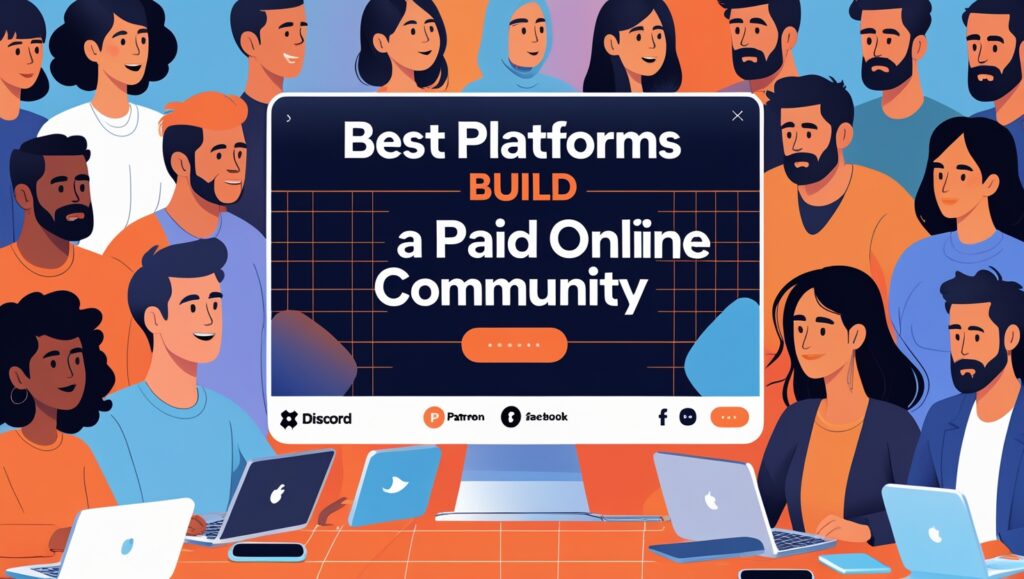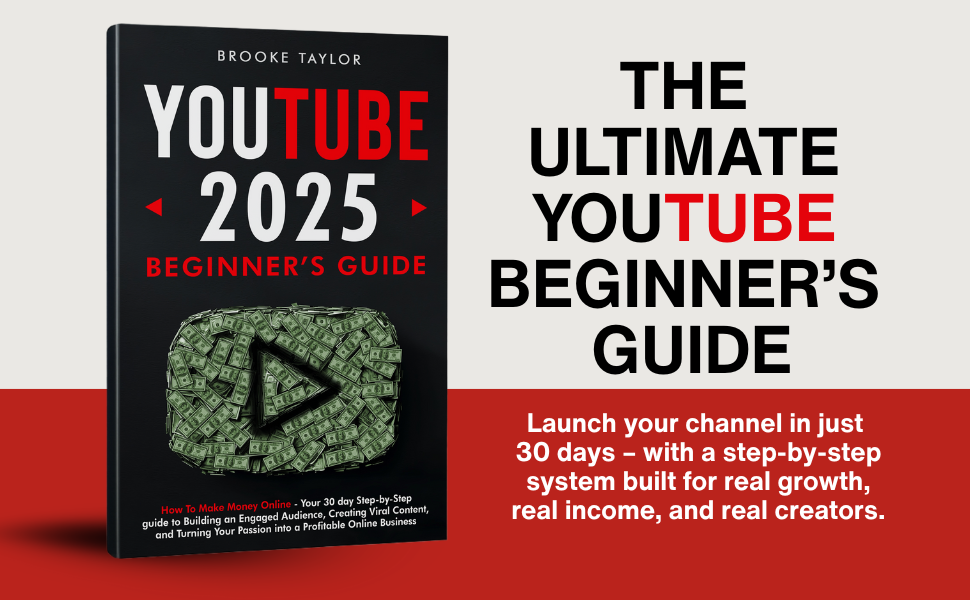Best Platforms to Build a Paid Online Community
When I first decided to build a paid online community, I didn’t want another platform that was bloated with features I’d never use or one that would require a team of developers just to get started. I wanted something simple, clean, and profitable — a space where I could deliver value, connect with people, and get paid — all without the tech headaches.
I tested a few platforms, wasted money on some that overpromised, and eventually found what worked for me. In this post, I’m sharing the best platforms to build a paid community online based on my personal experience — what I loved, what didn’t work, and what I use now to run my own paid groups.
If you’re looking for a shortcut, I personally use and recommend Skool — it’s where I run my private group and online courses, and you can try it here:
Click here to create your Skool community

Table of Contents
1. Skool – The All-in-One Community + Course Platform
After testing several tools, I landed on Skool — and to be honest, it’s been a game-changer for me. It combines everything I need in one place:
- Private community feed (like Facebook, but distraction-free)
- Built-in course hosting with video, modules, and PDFs
- Calendar system to host live calls or events
- Stripe integration to charge for access
- Gamification to boost engagement with points and leaderboards
What made Skool stand out was how fast I launched. I had my group live and ready for members within a few hours — no dev team, no funnel, no Zapier. I connected my Stripe account, set my pricing, and invited my audience in.
Best part? I started earning recurring monthly income without managing ten different tools.
If you want to see how simple it is, here’s my referral link to try it:
Start your Skool group here
2. Circle – For Customization and Multiple Spaces
I tried Circle for a while when I needed something a bit more flexible. It’s a beautiful platform, and I’ll admit — the design is really polished. It lets you create multiple spaces, channels, and sub-communities, so if you’re running several programs under one brand, it can be useful.
But what held me back was the complexity. Circle requires more setup and more integrations — especially if you want to sell access or host courses. You’ll likely need a separate tool for payment processing, course content, and possibly even email.
If you’re someone who loves custom workflows, Circle is solid. But for me, it was too much to manage when I just wanted to coach and serve my members.
3. Mighty Networks – Social-Like Experience
Mighty Networks positions itself as a community-first platform with a social feed, course modules, and native mobile apps. It’s popular among creators who want an experience that feels more like a private social network.
It’s fairly easy to use, and it gives members a familiar feel — like a mix between a forum and a Facebook group. But I found it to be less structured for course delivery, and a bit clunky when it came to monetization, especially with limited payment features.
If your goal is casual community interaction and mobile-first delivery, it can work. But for clean coaching programs, it wasn’t my top pick.
4. Kajabi – The Marketing-Focused Powerhouse
Kajabi is one of the most well-known platforms out there. I used it for a while, and there’s no denying its power — landing pages, funnels, emails, automations, course hosting, and more. But here’s the thing: it’s expensive and complicated for what I needed.
For someone who wants to run automated launches and advanced email flows, Kajabi might be worth the investment. But for creators, coaches, or solopreneurs just starting out — I found it to be overkill. Too many features. Too much setup.
And if all you want is a simple paid community with content and calls, it’s not the cleanest option.
5. Patreon – Simple, But Not Customizable
Patreon works well for creators who want to monetize their audience with recurring payments. It’s simple to set up, but it lacks flexibility when it comes to content delivery, community management, or structured coaching programs.
You can use Patreon to drip content or offer access to a Discord or Telegram group, but if you want to actually host content + engagement in the same place, you’ll need to stack other tools.
It’s a great entry-level option, but I quickly outgrew it.
Why I Chose Skool (And Still Use It Today)
After testing all of these platforms, I kept coming back to Skool. It was the only one that felt like it was built specifically for people like me — coaches, educators, community leaders, and creators who want to build real value and get paid for it.
I didn’t need to learn coding. I didn’t need to hire someone. I just created the group, uploaded content, invited people in, and started earning monthly revenue.
If you’re ready to stop overthinking and finally build your own paid online community, I genuinely believe Skool is the best platform to start with.
Click here to start your community with Skool
One of the reasons I believe Skool is the best option for 2025 and beyond is because of how it simplifies my business. Before Skool, I was using Zoom for calls, Kajabi for my courses, Facebook for the group, Stripe for payments, and a Google Sheet to manage access. Now, I log into one dashboard — and everything is right there.
I’ve also noticed that the user experience on Skool is incredibly intuitive. My members don’t get lost trying to find content or live call links. They log in, click “Classroom” for content, or “Calendar” for events. That clarity helps reduce churn and improves how long people stay subscribed to my community.
Skool’s built-in gamification system is another powerful feature that many other platforms just don’t have. Members earn points by participating — posting, commenting, or completing lessons. That creates natural engagement and momentum. I’ve seen members go from passive watchers to active participants just because they wanted to climb the leaderboard.
For me, retention is more valuable than acquisition. I’d rather keep 80% of my members happy and active than constantly chase new signups. With Skool, I’ve seen my member retention rate increase significantly because people feel like they’re part of something structured, supportive, and easy to navigate.
Another big selling point is how fast I can launch new offers. When I want to create a mastermind, a mini course, or a pop-up challenge, I don’t need a developer or a funnel. I just create a new Skool group, drop the content in, and link Stripe. That kind of speed helps me stay creative and profitable.
From a brand perspective, I also love that Skool feels premium. When someone joins my group, they immediately see that this isn’t another messy Discord or chaotic Facebook Group. It’s clean, structured, and looks like a professional learning environment. That first impression builds trust instantly.
I’ve had several people reach out asking what platform I use for my community, and I always tell them: it’s Skool — and I can’t recommend it enough. If you’re reading this and want to test it for yourself, here’s my referral link again:
Start your own Skool group here
If you’re a coach, course creator, consultant, or anyone who wants to get paid for their knowledge, I can’t think of a better platform. Whether you’re charging $9/month or $1,000+, Skool makes it easy to collect payments, deliver value, and build long-term relationships — all without the overwhelm.
The thing I always tell people is this: tech should never be the reason you delay launching. And yet, so many creators get stuck trying to connect tools or perfect a funnel. Skool removes all of that. You can launch a group today and be fully operational in just a few hours.
Another overlooked benefit is how engaged Skool’s support and product team is. They constantly roll out updates based on what creators need, and the internal Skool community gives you access to others who are building, launching, and growing. You’re never alone on the platform — and that kind of support is rare.
I’ve also started using Skool’s affiliate program to create an additional stream of income. Every time I recommend Skool to another creator and they sign up through my link, I earn 40% recurring monthly commissions. It’s completely passive and aligned with the platform I already use daily.
If you’ve been thinking about building a paid community — don’t overthink it. Start simple. Use a platform that works. Use Skool.
Click here to start building your Skool community







6 thoughts on “Best Platforms to Build a Paid Online Community”